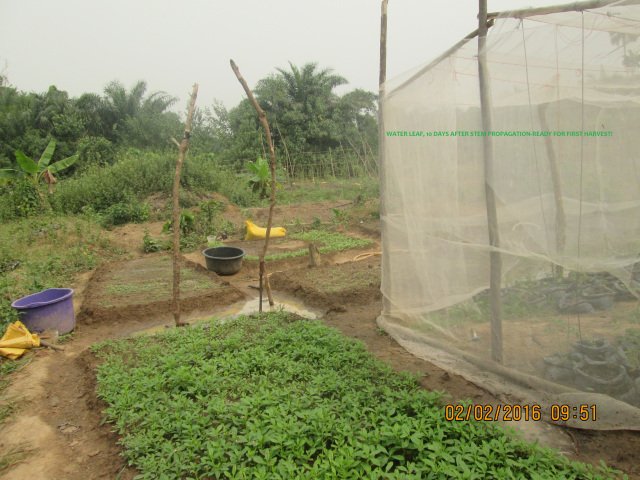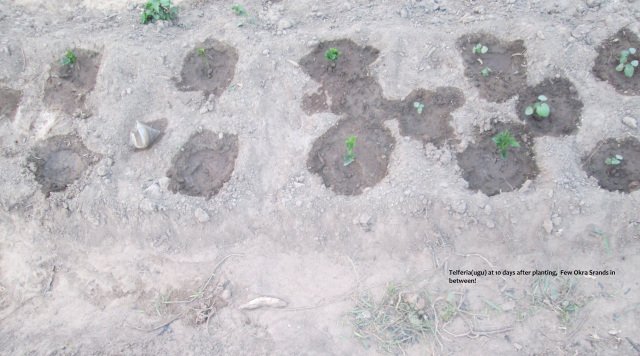In most parts of Africa and indeed other parts of the world, there is a period of little or no rain reffered to as dry season - occuring during October/November to March/April of the following year. The beauty of dry season farming is that the crops do better and command higher prices as only few farmers grow during these periods.
I will be sharing a very popular post i made on my blog years ago, it appeared on https://kalusam.wordpress.com/2013/02/17/growing-dry-season-vegetables-sucessfully/
Happy reading...
Cultivating vegetables in dry season is indeed an uncommon form of farming in Nigeria. Contrary to what you may have earlier believed , there are crops that can survive and thrive well in this condition.
Warm season vegetables such as tomato, pepper, cucumber, okra, eggplant, garden egg, melon, pumpkin, sweet potato, green amaranth can survive the dry season and can thrive very well.
In order to maximize the space, you may choose to mix crop several crops on the same piece of land. During my dry season farming project in early 2016, i used a 25m x 40m…1000sqm or 1/4 acre land space and I intercropped, Telferia(Ugu), Water Leaf, Green Amaranth, Red Amaranth and Chochorus on different beds.
Intercropping is the practice of growing more than one crop plant species,
simultaneously, in contiguous stands, on the same piece of land.
Mixed intercropping is the practice of growing two or more crops with no distinct row arrangement.
The first Step you need to follow is land preparation.
Land preparation involves clearing of the area you are to use for the dry season vegetable farming without removing the top soil, this can be achieved by first slashing with cutlass and gently weeding with hoe (this method highlighted depends on the area of land to be cultivated)
After weeding the area, I made beds about 5m x 2m (for Water Leaf,Green Amaranth, Red Amaranth and Chochorus) and 1m x 10m bed for the Telferia(Ugu) putting a furrow space of about 0.5m between each of the beds, making sure I maximize the land.You may need to pour lots of water in the area to make the soil softer for tilling.
After making the mounds, you incorporate the beds with Organic manure( poultry manure highly recommended) and make sure you pour water on it as you mix.
It is highly recommended that you plant in the early mornings or evenings as this will help in the growth and development of your crop.
With your planting materials (the vegetable seeds, trowel), you plant the seeds with a right planting distance to avoid competition among the crops.

Water leaf at 10 days after stem propagation…ready for first harvest!
I planted one fluted pumpkin seed per hole with the pointed part buried into a hole of about 2cm deep, 50cm apart (both inter row and intra row). I planted the other vegetables at a rate of 300 seeds per sqm, spreading them evenly to avoid competition!

Telferia and Okra
NOTE: After planting, the crops should be watered every day: morning and evening, even after they are mature for harvesting (usually a few weeks). For your crops to survive of course, you need Irrigation. We used the treadle pump to pull water from the underground well on the farm during our dry season farm project..
Now you have the information, this is your time to act; you don’t have an excuse for not utilizing that space in your backyard!
Just so you know I am still into dry season farming but we have upgraded to using poly containers and drip irrigation, i will be sharing how to farm in poly containers in future posts...until then remain blessed!
It's one of the great things about Steemit, that we can hear of growing challenges and solutions from many parts of the world. It gives is all great ideas for the changing climate conditions to come. Thank you for posting
Thanka so much for the comments. Climate change is a reality!
Hi! I am a robot. I just upvoted you! I found similar content that readers might be interested in:
https://kalusam.wordpress.com/2013/02/17/growing-dry-season-vegetables-sucessfully/